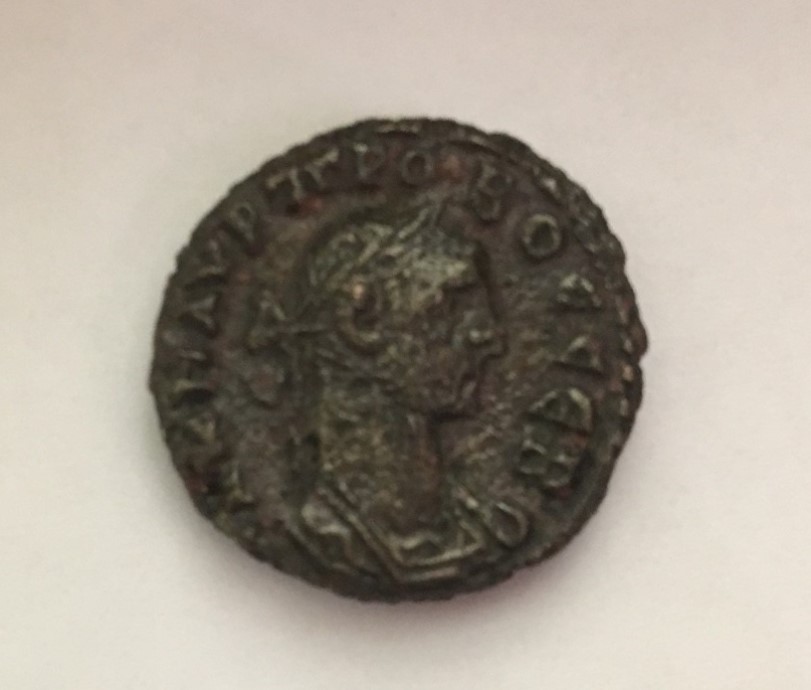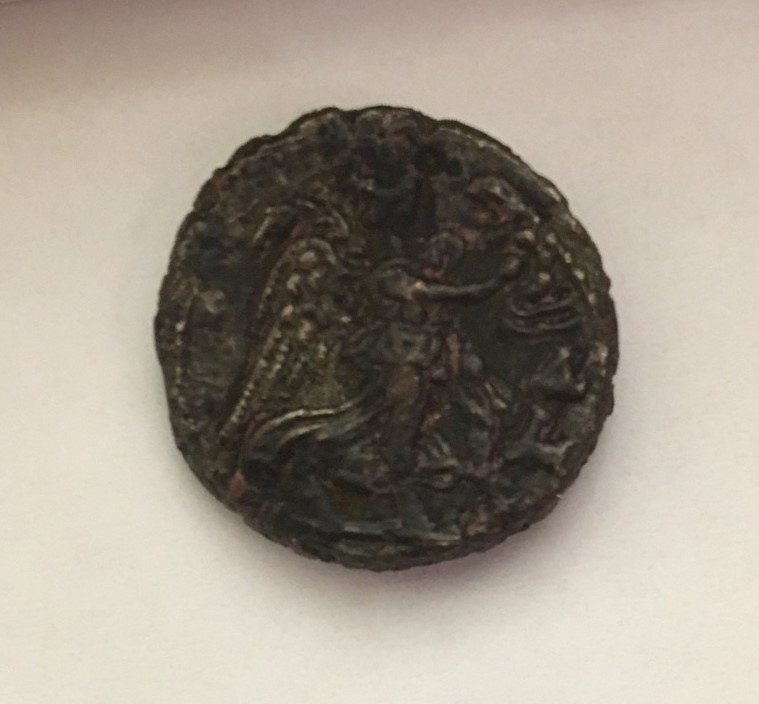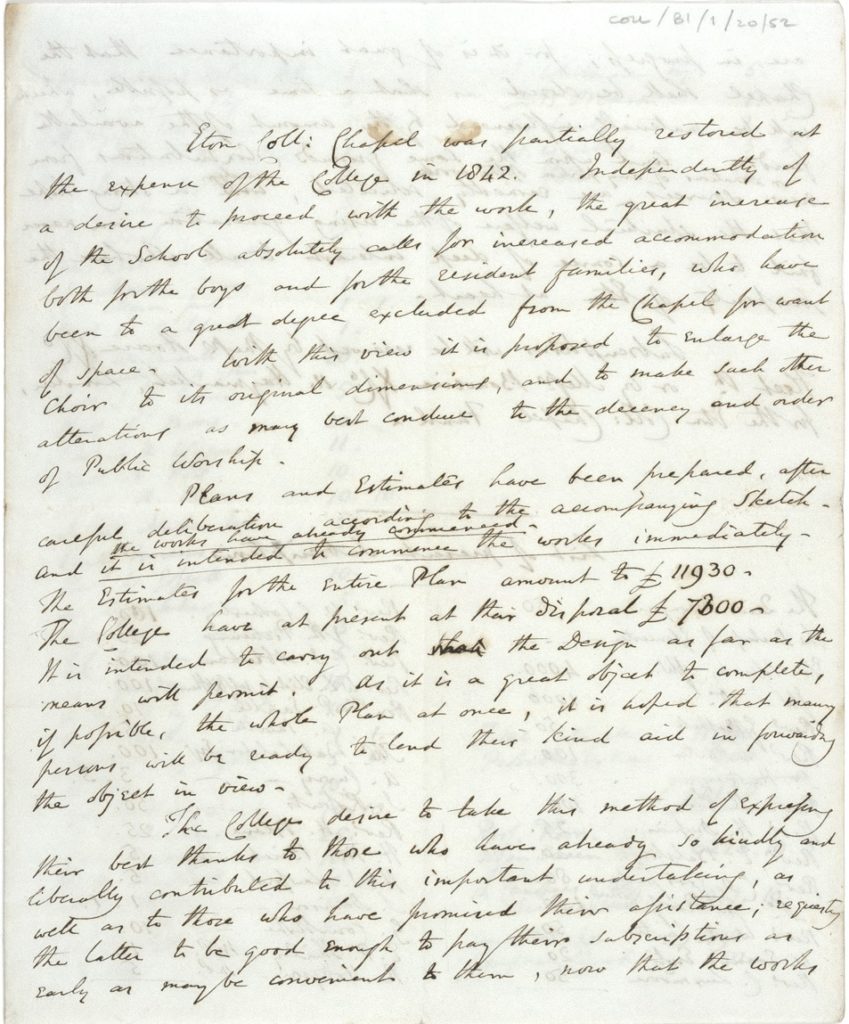At some point in the 1970s a small Roman coin was discovered in a garden off Eton High Street. It was not until 1984, however, that Jack Speller was able to get his find properly identified by the Keeper of Antiquities at Eton College, Dr Michael Ballance. What he had uncovered was a coin of the Emperor Probus (with a figure of Victory on the reverse) from the late third century CE.
Probus was born in Sirmium in modern-day Serbia, joined the army as a young man and worked his way up through the ranks. While serving as commander of the eastern army in 276 he was proclaimed emperor by his own troops. He reigned for six years (an impressive feat during these tumultuous years), and was fully occupied during that time fighting Franks and Vandals in Gaul and Middle Europe, putting down usurpers and rebellions, planning a major campaign against the Persians and supervising the regeneration of his hometown of Sirmium. Ironically it was his innocent-seeming efforts to help his hometown that led to his death. His plans to drain the local marshes and reclaim valuable farmland seem inoffensive, even laudable, but his soldiers, resenting the Emperor’s strict disciplinarianism, chased Probus into a nearby watchtower and hacked him to death.
So much for Probus – what about his coin? From the Greek legend it is clear that the coin, a tetradrachm with a value equivalent to a denarius (mostly bronze with just a trace of silver), must have travelled some distance from the Eastern part of the Roman Empire to reach a garden in Eton. The legend reads:
A[UTOKRATOR] K[AISAROS] M[ARKOS] AUR[ELIOS] PROBOS SEB[ASTOS] which translates the Latin: IMPERATOR CAESAR MARCUS AURELIUS PROBUS AUGUSTUS.

Reverse of a tetradrachm: bronze coin minted in Alexandria, 278-279 CE
Since Alexandria in Egypt was the only city to produce Greek coinage for Probus we can be confident that this is where it was minted. From the Greek letters on the obverse we are also able to date the coin to the fourth year of Probus’ reign (278-279 CE).
How then did this Greek/Egyptian/Roman coin make its way to Eton? Unlikely as it may sound, it did not travel with a Roman soldier or merchant, but hitched a ride to Britannia in a sack of potatoes. Jack Speller had not been not digging in his garden when he unearthed the coin, but emptying out the soil from a sack of particularly earthy new potatoes. As the clods of earth fell out, something caught Jack’s eye and that something, after days of painstaking cleaning to remove the heavy clay, turned out to be our Roman coin. Since the potatoes came from Cyprus, the coin must at some point in antiquity have made its way from Alexandria to that island, where it presumably lay lost and buried for almost two thousand years. In the 1970s it was then unwittingly scooped up into a hessian sack and transported all the way to Tudor Stores Grocery shop on Eton High Street.
Some forty years later Jack’s daughter offered the much-travelled coin to the Eton Museum of Antiquities and we have been delighted to accept it as much for the story of its journey, as for the object itself. So the next time you find yourself peeling potatoes, keep your eyes peeled too: you never know what you might find.

By Rob Shorrock (RECS), Keeper of the Eton Museum of Antiquities



